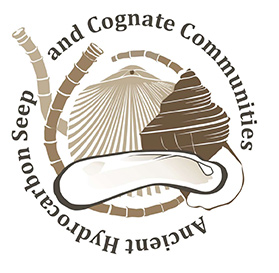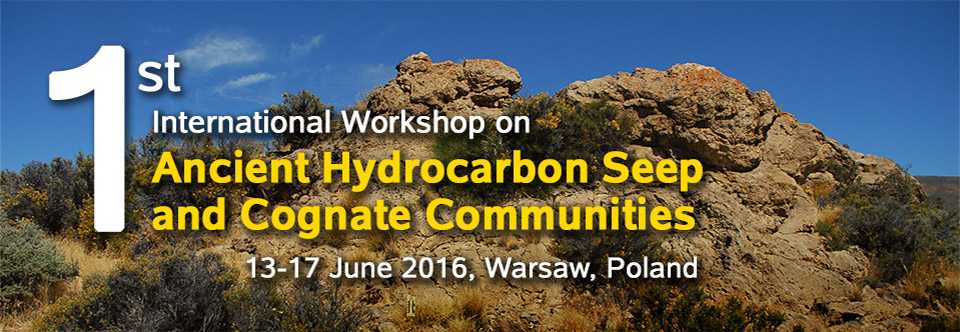
1st International Workshop on Ancient Hydrocarbon Seep and Cognate Communities
The discovery of deep-water hydrothermal vent communities in the late 1970s was one of the most unexpected events in the marine biology of the 20th century. The animals known previously from the deep-sea floor were typically rare and small, while the newly discovered hydrothermal ecosystems consisted of large and numerous polychaetes, mollusks, arthropods and other animals. In the following years, similar communities have been also discovered around submarine seeps of methane (hydrocarbon seeps), whale carcasses and wood falls. The term "chemosynthetic communities" has been coined for these types of ecosystems.
After discovery of chemosynthetic communities in the modern oceans, geologists and paleontologists started to search for their fossil counterparts. This effort has resulted in the discovery of numerous ancient chemosynthetic communities, and the available information on the evolution of chemosynthesis-based environments has grown enormously in recent years, encompassing a number of geographic regions and stratigraphic time slices. Although several patterns of evolution and development of ancient chemosynthetic communities are now emerging, there are still unanswered questions pending. This workshop is aimed at an exchange of ideas, data and contacts among the researchers studying chemosynthetic communities around the world. Paleontological, geochemical and modern biological points of view are all most welcomed. The meeting will also serve to highlight an upcoming book on Fossil Hydrocarbon Seeps to be published in the Topics of Paleobiology series of Springer Verlag (editors Andrzej Kaim, Neil H. Landman, J. Kirk Cochran). We hope to gather the book contributors for a business meeting in Warsaw.
We heartily invite all paleontologists, geologists, geochemists and biologists involved in seep, vent and fall research to participate in our workshop.
Hosting Institution:
Institute of Paleobiology, Polish Academy of Sciences, Warsaw, Poland with the patronage of its Director, Prof. Jerzy Dzik.
Organization Committee:
Andrzej Kaim, Krzysztof Hryniewicz, Maria A. Bitner (all Warsaw, Poland), Robert G. Jenkins (Kanazawa, Japan), Neil H. Landman (New York, USA), J. Kirk Cochran (Stony Brook, USA).
Fee:
No fee but registration is required.
Venues:
Conference Room of the Institute of Paleobiology PAS and the Museum of Evolution PAS in Palace of Science and Culture. Both sites are located in city center of Warsaw, approx. 30 minutes by bus or train from the International Warsaw Chopin Airport.
Form of presentation:
Talks: We plan time slots of 25 + 5 minutes for regular talks and 15 + 5 for student talks (depends on the number of submitted presentations). Please prepare your presentations in Windows compatible files (Power Point, Adobe Acrobat). No Mac machines will be available.
Abstracts should not exceed single page A4 with 11pts of font size (Calibri or similar).
See template:
Posters should not be larger than 75 x 115 cm with longer vertical dimension. Poster presenters may provide flash talks before the poster session.
Excursion:
Day trip to Owadów quarry with ongoing excavation of Tithonian fossils with Solhofen type preservation. Numerous decapod crustaceans (lobsters), horseshoe crabs and insects. Also ammonoids (Zaraiskites) and marine reptiles (ichthyosaurs, turtles and crocodylomorphs) in the lower part of the section. Distance from Warsaw around 140 km. Number of places limited; first come, first served. Trip guided by Błażej Błażejowski (Warsaw).
